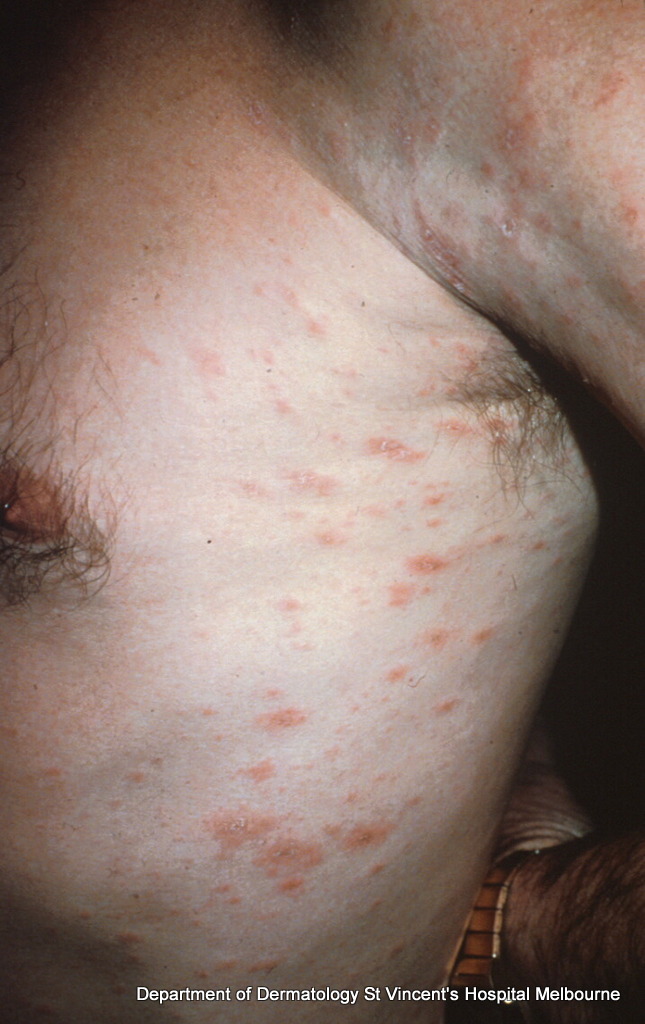Pityriasis rosea
What is pityriasis rosea?
Pityriasis rosea is a common self-resolving rash that usually occurs in children and young adults but can occur at any age. Individuals are generally otherwise well.
What causes it?
Many different infective causes have been considered, however the evidence that any particular one is the cause remains controversial.
What does it look like?
The rash usually starts with one larger pinkish-red scaly patch, called the “herald” (or first) patch, on the trunk of the body. This herald patch is followed several days to weeks later by multiple smaller round or oval red scaly patches. They are usually scattered on the trunk and can extend to the neck, top of the arms and top of the thighs. They tend to have inward facing scale found towards the outer edge of the patch and are often arranged in a “Christmas tree pattern” on the trunk, with the long axis of the patches lying parallel to the ribs. Sometimes the rash can be itchy.

There are more unusual types of pityriasis rosea that may occur, for example, without a herald patch, or that can affect the folds of the body, or have blisters or a bruise-like appearance.
Sometimes before a rash appears, the affected person may experience “flu-like” symptoms such as a sore throat, runny nose, headaches or feeling tired.

How is it diagnosed?
The diagnosis is usually made by the dermatologist examining the patient and seeing the typical appearance of the rash. Occasionally a skin biopsy will need to be done.
Does it cause any complications?
When the rash occurs in pregnancy, particularly in the first 15 weeks, miscarriages have been reported. Premature delivery and other perinatal complications have also been noted. Careful obstetric observation is recommended.
How is it treated?
The condition usually gets better without any specific treatment. General measures such as using gentle soap free washes and moisturising creams can help irritation. Other treatment options include mild topical steroids and natural sunlight.
Generally, the rash fades away within 6 to12 weeks. It is very unusual for pityriasis rosea to reoccur.
If it is itchy or persists or you have any concerns, please see your dermatologist.
This information has been written by Dr Clare Tait
Last Updated 06/04/2017